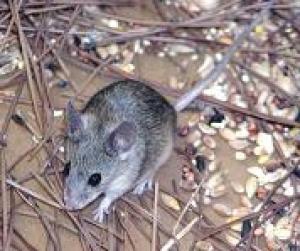| Taxon ID: 37,121 Total records: 39,143 | ||||||||||||||
Mus cookii
Country
| Country | Myanmar |
|---|---|
| Continent Ocean | Asia |
Classification
| Kingdom | Animalia (COL) |
|---|---|
| Phylum | Chordata (COL) |
| Class | Mammalia (COL) |
| Order | Rodentia (COL) |
| Family | Muridae (COL) |
Taxonomy
| Genus | Mus | Reference | |
|---|---|---|---|
| SubGenus | Vernacular Name | ||
| Species | cookii | IUCN Threat Status-Year | Least Concern, 2008 |
| SubSpecies | Nat'l Threat Status-Year | Not Evaluated, 2000 | |
| Infraspecies | Reason for Change | ||
| Infraspecies Rank | CITES | ||
| Taxonomic Group | Mammals | Native Status | Native |
| Scientific Name Author | Ryley, 1914 | Country Distribution | Myanmar |
| Citation | Description | Geographic Range [top]
Range Description: This species is found in two distinct populations, one centered on northeastern South Asia (Bangladesh, Bhutan, northeastern India and Nepal [Molur et al. 2005]) and northwestern Myanmar, and a second ranging through central and eastern Myanmar, southern China (Yunnan, west of the Salween River [Smith and Xie 2008]), Thailand, Lao PDR and Viet Nam. Both populations are widespread but patchily distributed. The northwestern population ranges from around 50 to 2,500 m asl (Molur et al. 2005), while the southeastern population occurs from about 200 to 1,500 m asl.
Countries occurrence:
Native:
Bangladesh; Bhutan; China; India; Lao Peoples Democratic Republic; Myanmar; Nepal; Thailand; Viet Nam
Additional data:
? Estimated area of occupancy (AOO) - km2: >2000
? Lower elevation limit (metres): 50
? Upper elevation limit (metres): 2500
Range Map: Click here to open the map viewer and explore range.
Population [top]
Population: The species is abundant.
Current Population Trend: Stable
Additional data:
? Population severely fragmented: No
Habitat and Ecology [top]
Habitat and Ecology: It is present in a wide variety of primary and secondary forest types. In South Asia it is found in subtropical dry deciduous forests, shola grasslands,temperate coniferous and broadleaved forests, and has been found to occupy arable land near Lantana bushes (Molur et al. 2005). In Southeast Asia it is only found in forested areas and occasionally in moderately disturbed areas such as upland gardens in forests. In China, it has been reported from upland rice fields and other disturbed habitats (Smith and Xie 2008).
Systems: Terrestrial
Threats [top]
Major Threat(s): There are no major threats to the species.
Conservation Actions [top]
Conservation Actions: It is presumed to be present in many protected areas. It is possibly present in some protected areas in northeastern India (eg. Namdhapha National Park, Arunachal Pradesh), and is almost certainly present in some protected areas in Southeast Asia. It is categorised as a vermin (Schedule V) of the Indian Wildlife (Protection) Act. No direct conservation measures are currently needed for this widespread and adaptable species. In South Asia, general taxonomic research, field surveys, and monitoring of populations are recommended for this species (Molur et al. 2005).
Citation: Aplin, K., Lunde, D. & Molur, S. 2008. Mus cookii. The IUCN Red List of Threatened Species 2008: e.T13958A4371393. http://dx.doi.org/10.2305/IUCN.UK.2008.RLTS.T13958A4371393.en. Downloaded on 24 August 2016.
Disclaimer: To make use of this information, please check the |
|
| Source |
Record Level
Growth Parameters
| Temperature | 0 | Observed Weight | 0 |
|---|---|---|---|
| Sex | Previous Catalog Number | ||
| Life Stage | Relationship Type | ||
| Preparation Type | Related Catalog Item | ||
| Individual Count | 0 | GML Features | |
| Observerd Individual Count | 0 | Notes |
Collecting Event
Images
|
Additional Info
Synonyms To Manage Synonyms for Mus cookii, click this link: Synonyms. |
Paruromys dominator (Thomas, 1921) |
Common Names To Manage Common Names for Mus cookii, click this link: Common Names. |
Cooks Mouse () ¦ Ryleys Spiny Mouse () ¦ |
Localities To Manage Localities for Mus cookii, click this link: Localities. |
Species Record Updated By:
Carlos Aurelio Callangan
|

